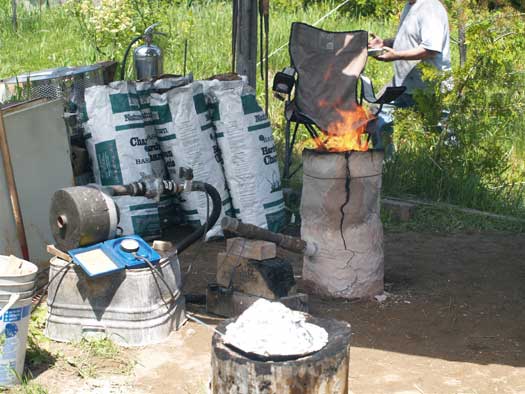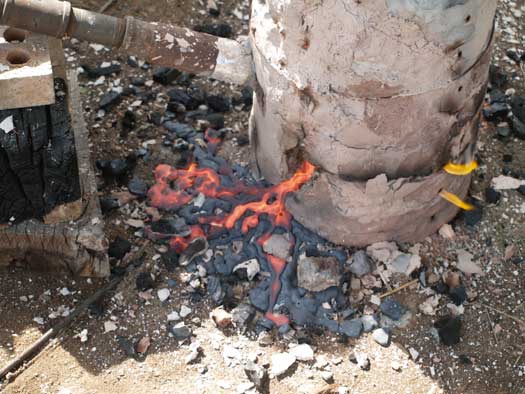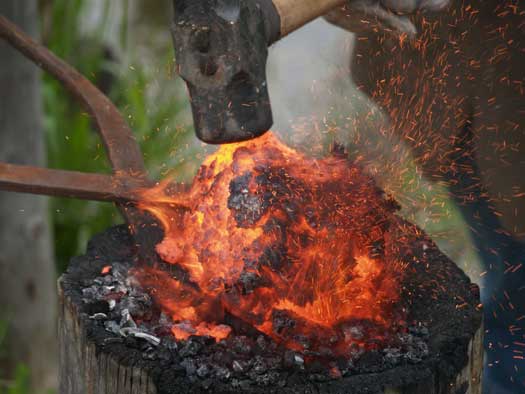
The workspace was 3 x 3 metres square, with the smelter in the rough center of the space. The smelter was constructed of solid clay, 20 cm interior diameter, about 65 cm tall, with walls 5 cm thick (see description). Tuyere was the ceramic insert type, set at the normal 15 cm above base level, at an angle of 23 down. Air for this experiment was provided by the electric blower, volume at 640 LPM, achieving an average burn rate of 16 minutes for 2 kg. The ore used was an analog for the LAM primary bog ore, at roughly 64% Fe, with a total of 18 kg (damp weight) added. Addition amounts started at 1 kg / bucket (2 kg) charcoal, climbing to 3 kg / bucket. Total time for the primary sequence (less extended pre-heat) was 4 1/2 hours.



The result was a classic planno-convex bloom, very dense, at 4 kg weight (after initial compaction. An excellent result!

Most importantly, the test was undertaken on a clean bed of sand, which will allow recording of the debris field created by the smelt, related to the known positions of the workers. This will be able to be directly compared with the records of the L'Anse aux Meadows excavations.
Interesting results and nice bloom!
ReplyDeleteTwo questions:
(1) how much slag (mass) was produced in this experiment and how much slag of various types - tapped slag, basal furnace slag)?
(2) how much clay (wt/mass) was required to build the furnace and how close are the nearest sources of good clay, suitable for this purpose, to L'Anse aux Meadows?